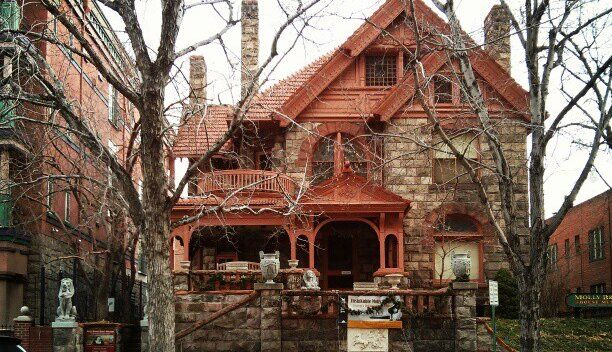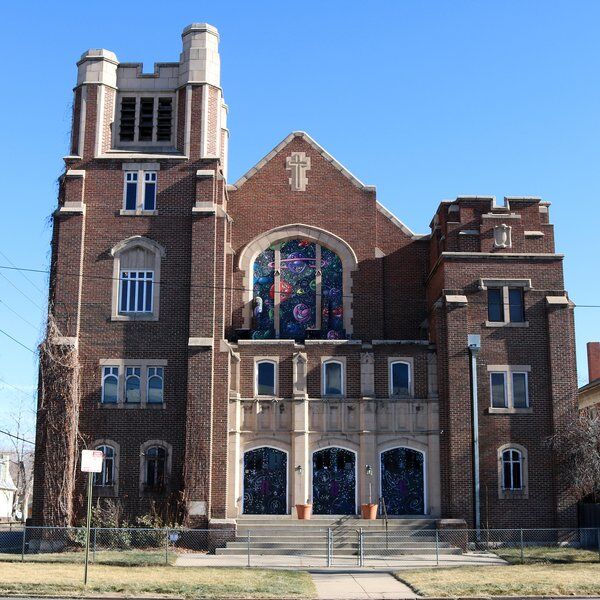Exploring the Historic Molly Brown House
The Molly Brown House, in Denver, Colorado, is a family home (turned museum) steeped in history. Denver itself has a deeply storied past and the Molly Brown House, as a recognised landmark, captures the essence of this past magically. In 1972, it was listed on the National Register of Historic Places. But not only is the house, also known as ‘The House of Lions’, a staple of Denver, it is also an ode to the indomitable spirit of its namesake, Margaret “Molly” Brown.
Molly Brown was an American philanthropist, activist, and socialite who famously survived the tragic sinking of RMS Titanic. It was her service to survivors that earned her the title ‘Heroine of the Titanic’, but she also became known as ‘The Unsinkable Molly Brown’. The Molly Brown House Museum is her legacy and offers visitors the chance to hear her incredible story, learn more about her family, and uncover Victorian Denver.
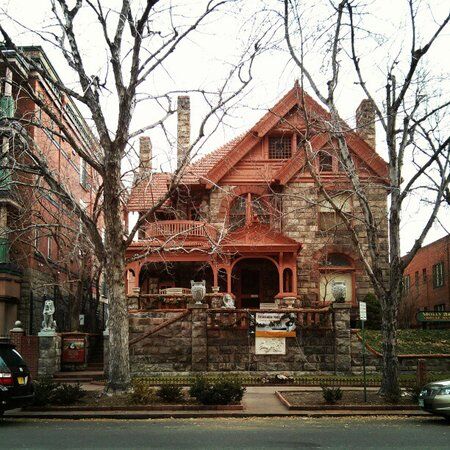
Molly Brown: Early Life
Margaret “Molly” Tobin Brown, was a remarkable woman who defied societal norms and played a pivotal role in Denver's history. Molly was born on July 18, 1867, in Hannibal, Missouri, to parents with little money. At the age of 13, after gaining a good education, which was important to her progressive parents, she began working. Caught up in factory work, her days were characterised by long hours and low wages, which affected most of her community, including her father.
On the wind of her dreams for a better life, Molly ventured west to Colorado with her brother Daniel in 1886, to seek her fortune during the Gold Rush. There, she met and married James Joseph “JJ” Brown, a mining lieutenant who struck gold in the mines of Leadville, Colorado in 1993, eventually making them incredibly wealthy.
Championing Reform
Despite her newfound affluence, Molly Brown was not one to sit idly by and could not ignore the social injustices in her new city. Witnessing the slums on the outskirts of Denver – born from the Silver Crash – lay claim to poverty-stricken families, especially the children, Molly rolled up her sleeves and joined the reformers. She championed women’s suffrage, was constantly striving to improve her community by assisting miners and their families, called for public baths in the courthouses, bettered the local schools, and even ran for a state senate seat in Colorado at the turn of the century. Clearly, helping others was a natural part of Margaret’s incredible character.
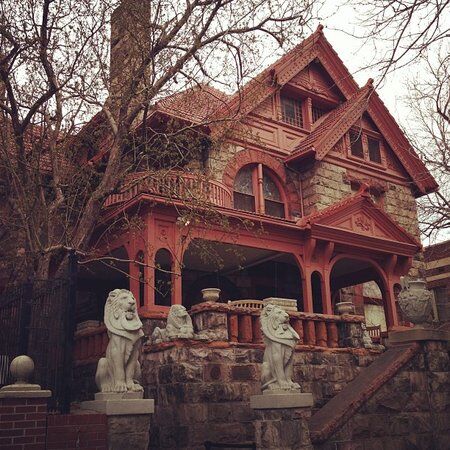
Molly Brown: The Daughter of Adventure
Whilst changing her society for the better on the ground, Margaret Brown also sought to enter Denver’s society on a higher level. However, following several unsuccessful efforts, desperation led the couple to embark on a world tour. They travelled to Ireland, France, Russia, India and Japan, among other places and Margaret documented their adventures and cultural observations in local Denver papers. It was from here that Molly entered the world’s stage. By polishing herself with travel, her charitable efforts, her grand residence, and further study Margaret became a favourite in international society.
The Unsinkable Molly Brown
Although Margaret was wealthy and dedicated to her philanthropic pursuits, it was her courage and compassion during the Titanic disaster in 1912 that set her name in the stone of history. She played a pivotal role in organising the rescue efforts on that fateful night, helping to comfort and care for fellow survivors and earning herself representation in a musical, and the iconic 1997 film.
James Cameron’s epic, Titanic, cast Kathy Bates in the portrayal of Margaret Brown. However, despite Bate’s wonderful representation of Brown, almost everything that made Molly so heroic was not depicted in the film. In fact, boarding the Titanic was a last minute decision on Margaret’s part driven by her desire to visit one of her sick grandchildren in America. And when it came to the sinking on April 15th, Molly reportedly refused to board a lifeboat in favour of helping her fellow passengers, until one of the crew physically lifted her into one.
It was here – on famous “Lifeboat No. 6” – that Margaret then kept up moral with her humour, strength, and singing. She also urged that same lifeboat to return to the Titanic for more survivors after realising it was under capacity and kept the woman from freezing by encouraging them to take up oars and row themselves, despite protestations from the men. When the lifeboat was rescued by the Carpathia, Brown continued her heroic efforts by handing out blankets, food, and drinks to the survivors.
Molly Brown and her Charitable Pursuits
It was this heroism, displayed not only aboard the Titanic but also afterwards – Margaret established a Survivors Committee, which raised $10,000 for the Titanic survivors – that placed her on the national stage for the first time. She was bestowed with the French Legion of Honor for not only helping the survivors but also for her efforts in WWI, when she established a relief for the soldiers located in France.
Her fame continued to grow as she provided aid for the victims of the “Ludlow Massacre” in 1914, when the Colorado National Guard attacked protesting mines and their families at Ludlow.
The History of the Molly Brown House
Architectural Beauty
Designed by renowned architect William A. Lang, the Molly Brown House was built at 1340 Pennsylvania Avenue (now Street), in 1889. It followed several popular architectural styles of the period, including Queen Anne and Richardsonian Romanesque. In 1894 the home was purchased from the original owners – the Large family – by J.J. Brown for $30,000 and became Molly’s in name from 1898. After 23 years of marriage Molly and J.J. separated in 1909, with Molly maintaining possession of the home.
The house reflects the opulence and elegance of the Victorian era and provides a glimpse into the lifestyle of Denver's high society during that time. Characterised by its asymmetrical design, decorative elements, and vibrant colours, the house’s exterior features ornate woodwork, bay windows, and a wrap-around porch, while the interior boasts intricate wood panelling, stained glass windows, and elegant period furnishings. Visiting the house is like stepping back in time to experience the grandeur and splendour of the Gilded Age.
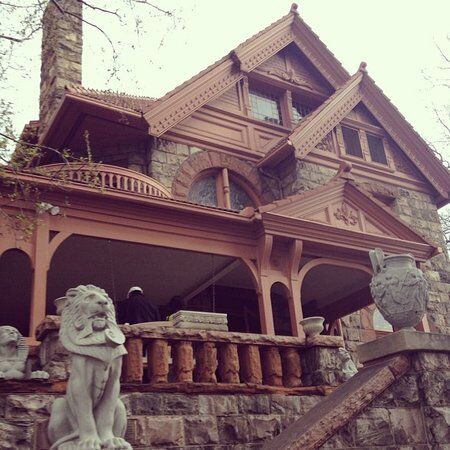
A Home For All
Due to Molly’s travelling feet – her separation settlement entitled her to $700 a month, ensuring she could continue her adventures – the home was frequently rented out while she was away. In 1902, Molly invited the Governor of Colorado and his family to use her home while his mansion was undergoing remodelling. In 1909 And in 1926 it was transformed into a boarding house managed by her housekeeper. After her death in 1932, the house was sold for $6,000, where it went on to become a rooming house for men, a Jane Addams Hull House settlement, and rooms for rent.
Preservation and Restoration
By 1970 the Molly Brown House was in such poor condition from years of neglect that it faced demolition. However, a local group of dedicated preservationists and history enthusiasts formed Historic Denver, Inc. on 11th December 1970 and successfully saved the house from destruction. The organisation then set about raising funds to restore the home to its former glory. As a frame of reference they followed original photographs from 1910 and used architectural research, and paint chip analysis.
The Molly Brown House Museum and Educational Center
After restoration efforts were complete the Molly Brown House was opened as a museum and educational centre. It continues to be owned by Historic Denver, Inc. who provide guided tours that delve into the life of Molly Brown, the history of Denver, and the broader socio-cultural context of the time. Visitors can explore the meticulously restored rooms, view period artefacts, and learn about the Brown family's remarkable contributions to society. There have even been intriguing reports of people seeing apparitions, smelling phantom cigar smoke, and finding curtains opened with no explanation.
Legacy and Lasting Impact
The Molly Brown House not only preserves the legacy of an extraordinary woman but also serves as a testament to the transformative power of historic preservation. Not to mention the community spirit, which saved it from destruction. It stands as a reminder of the importance of recognizing and celebrating the diverse voices and achievements that have shaped our cities and our world.
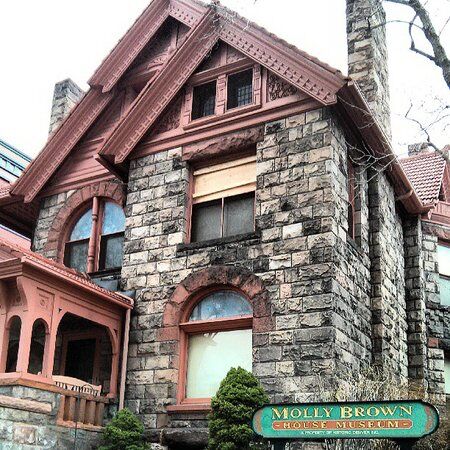
Our Thoughts…
The real Margaret Brown was a powerful woman who championed women’s rights and those in society who couldn’t fight for themselves. She invested time, money, and considerable effort into helping those in need and by the end of her life, had sealed her place in history as the ‘Heroine of the Titanic.’ As such, the Molly Brown House in Denver is not just a beautiful historic home; it is a tribute to this incredible woman and an essential part of Denver's cultural heritage. Visiting this iconic landmark provides a captivating journey into the past, allowing us to celebrate the achievements of a remarkable woman and gain a deeper appreciation for the rich history of the Mile-High City.
Interested in finding more places like this? Try one of our CityDays Urban Exploration Games - untangle cryptic clues as a team, as you are taken on a journey to the most unique, unusual and bizarre corners of cities around the world.
